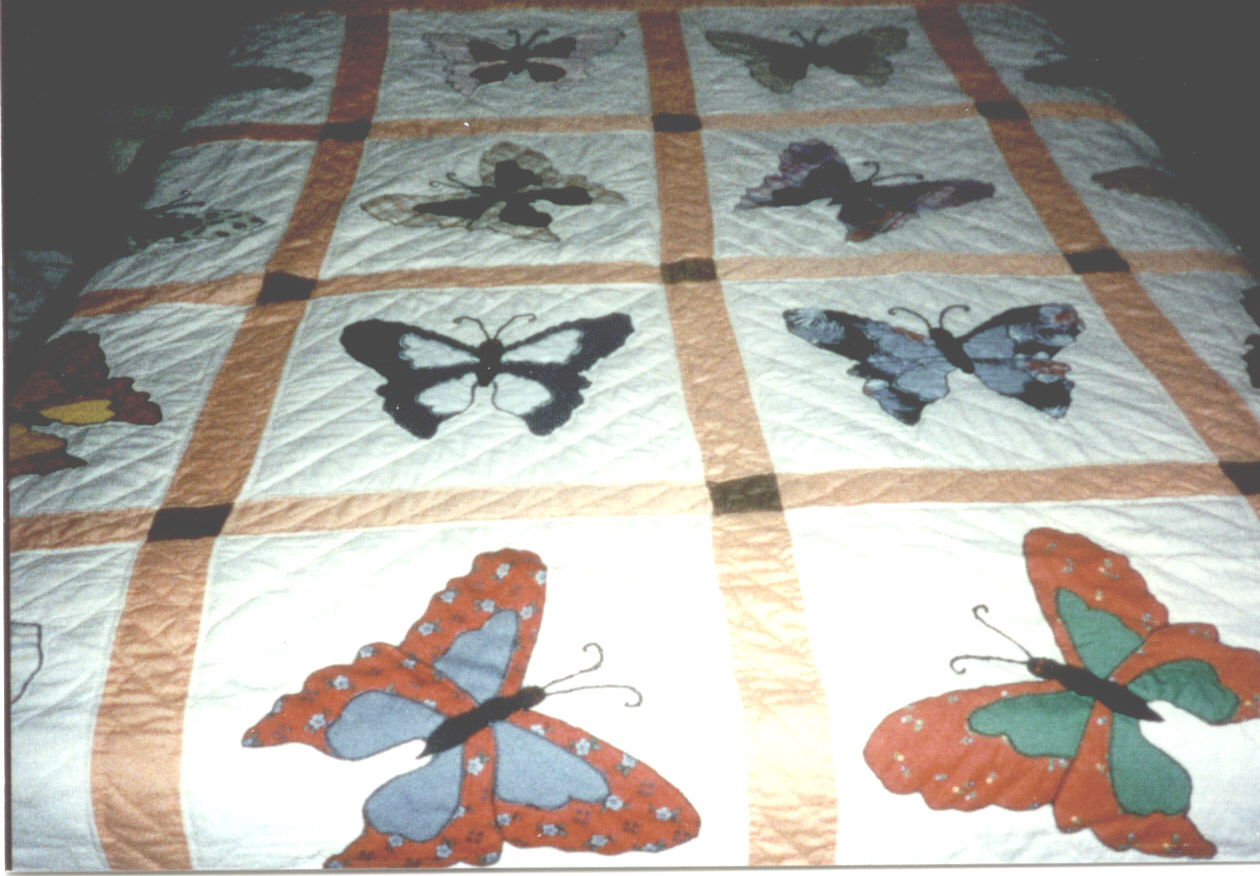RandomButterflies
(Asymmetric)

Analysis of Random Butterflies

KEY:
1) red segments represent reflection mirrors
2) light green segments represent glide mirrors that are not reflection mirrors
3) dark blue segments represent translation generators
4) dark green segments represent shortest glide vectors that are not translation
generators
5) yellow points represent cyclic centers
6) light blue points represent dihedral centers
7) fundamental region is shaded pink
8) quilt block is shaded yellow
Symmetries present:
none
Description of symmetries: Because
of the various and random orientations of the butterflies in this quilt, there
are no symmetries.
Description of fundamental region: none
Description of symmetries in block: Interestingly,
within each block, the butterfly alone would have vertical reflection with
the mirror passing through the center of its body. However, looking at the
block as a whole, most are asymmetric.
Relationship between block and fundamental region:
Since there is no fundamental region, there is no relationship
between it and the block.
Description of symmetries in quilting:
The quilter 'traced' the butterflies and 'filled in' the rest
of the quilt with diagonal quilted strips forming an inverted V-pattern with
the vertex of the V being in the center peach strip of the quilt. Thus, the
quilting symmetry is not in harmony with the quilt symmetry. There is also
a quilted 'fern' border or stip pattern (not visible in the photo).
See below.
Random Butterflies Border Pattern
To see entire quilt, scroll up to the top.
THG, or i*


Analysis of hand-quilted border

The translation vector of the strip pattern
is equal to the distance from the left stem of the fern to the left stem of
the next fern.This is also the glide vector.The horizontal reflection mirror
(which also acts as a glide mirror) is perhaps approximate due to the slightly
askew right most leaf of the fern.




